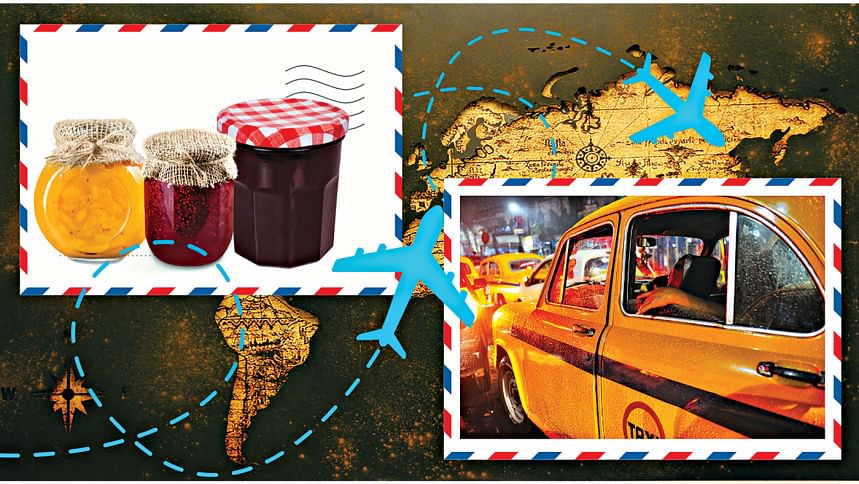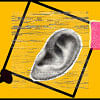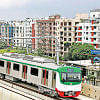London cabs, jams and kinship

London, once the centre of the empire where the sun never set, dates back to prehistory with evidence of structures from Mesolithic times. This was of course long after dinosaurs had died, and humankind had started on its journey. The journey takes us through history where the Roman Empire gave way to the British Empire. Coaches dotted the cobbled paths. Jane Austen, Sherlock Holmes and so many more wrote of them–that was before the jet set drove at breakneck speed across the autobahn, or man thought of colonising outer space. Those were more graceful eras when people had time to pause and stare. But, from Londinium of Queen Boadicea's time, perhaps one interesting thing remains–the speed at which the traffic moves in downtown London–along residential areas. Or, maybe Boadicea, whose statue graces the banks of Thames, was faster paced than taxis in modern-day London as she rushed down with her tribal lot to raze the Roman stronghold in Britain, for after all, they had taken away her kingdom. Perhaps, sitting inside a London cab is more like being in a horse trotting carriage with Ms Betsy Trotwood. Of course, those would be coach horses, and these were crawling cabs.
Crawling cabs are a feature of many downtown traffic infested cities around the world. But the distinction in Londinium was that there were no impatient honks, no angry rebuttals from drivers or passengers but a peaceful calm camaraderie, a patient wait to get to the destination. The traffic in general moves slowly. It was somewhat like the protests they hold outside the Parliament and Westminster Abbey–disciplined with placards, no violence, no unruly mobs, no clashes with police or bloodshed.
Bangkok has jams and so does San Francisco. There is perhaps no country in the world that is jam free–both kinds, traffic and the edible fruit-flavoured ones that go with bread or scones at breakfast or tea. I remember, once during the Mayday holiday in China, being stuck in a jam in a scenic town called Hangzhou. Pedestrians moved faster than us and yet we were told to sit tight as otherwise we were likely to get lost. It was our first holiday in China.
Occasionally, cabs in London town refuse to ferry passengers across to another area as the places are, say the cabbies, 'too far'. But I had seen that in Kolkata too–when it was spelt Calcutta and the claims of Job Charnock to being its founder had been unchallenged–that is, when I was a teen. Now, as the crown returns its 'loot' on popular demand to countries who may or may not care for them as well as the British Museum, I wonder if the London cabbies learnt the trick from Calcutta drivers of yore or was it the other way round.
The trend has recently spread through more colonies of the former empire. In Singapore too, nowadays the cabbies choose their passengers based on their own needs and conveniences, not that of the passengers. Private hires offer multiple rides in the same car–not much different from a stagecoach, except they are sleeker and carry fewer, belted, and seated in more comfort. The cost is shared.
In cities like Delhi, traffic jams are accompanied by noise of honking horns and irate drivers overtaking from the wrong side. If your cabby does not close his window, you might hear colourful language and watch people hawk. You can see that even from inside a closed window.
The place for watching people hawk though is China–where jams are not unheard of either. Once, I had seen a man hawk while on a ropeway in Guilin. There were people walking below and I wondered how they would interpret the viscous liquid that dropped from high above their heads?
But getting back to traffic. Bangkok has jams and so does San Francisco. There is perhaps no country in the world that is jam free–both kinds, traffic and the edible fruit-flavoured ones that go with bread or scones at breakfast or tea. I remember, once during the Mayday holiday in China, being stuck in a jam in a scenic town called Hangzhou. Pedestrians moved faster than us and yet we were told to sit tight as otherwise we were likely to get lost. It was our first holiday in China. A few months later in Beijing, I remember, on one such holiday when the whole of China was out to party, we were stuck in a human jam in the Summer Palace. It was tough to quit too–to go against the stream of people that almost carried us with them–but we did do it and escaped.
China was the place where I learnt to bake scones. I had read of them in Enid Blyton books when I was a child. I learnt an easy recipe for children while compiling a multi-national cookbook with a German friend. And those scones did not even need a jam to go with them.
However, Paddington Bear might still have needed jam. Marmalade jam was always a favourite with the fictional bear who moved out of the deepest, darkest of Peru, a place I have always wanted to visit, especially the Incan ruins. I have yet to go to South America. But the very fact that I could see their artefacts in the British Museum drew me closer to their culture. The commonality of humankind is something I have seen displayed in artefacts in museums. I have never quite understood the concept of homeland. Between marmalade and morogba (mango jam), the difference is only the favour of fruit and what climate suits which tree. I have lived in bungalows with orange trees and in houses with mango trees and loved living in both, even though they were separated by divides created artificially by our species.
For a lay person like me, a glimpse into the commonality of humankind generates a sense of kinship with people of diverse cultures. That is what museums showcase. Or traffic jams. Or even jams from many countries or cultures to spread on bread and scones.
Mitali Chakravarty is the founding editor of borderlessjournal.com, which has published its first hardcopy anthology, Monalisa No longer Smiles: An Anthology of Writings from across the World.

 For all latest news, follow The Daily Star's Google News channel.
For all latest news, follow The Daily Star's Google News channel. 










Comments